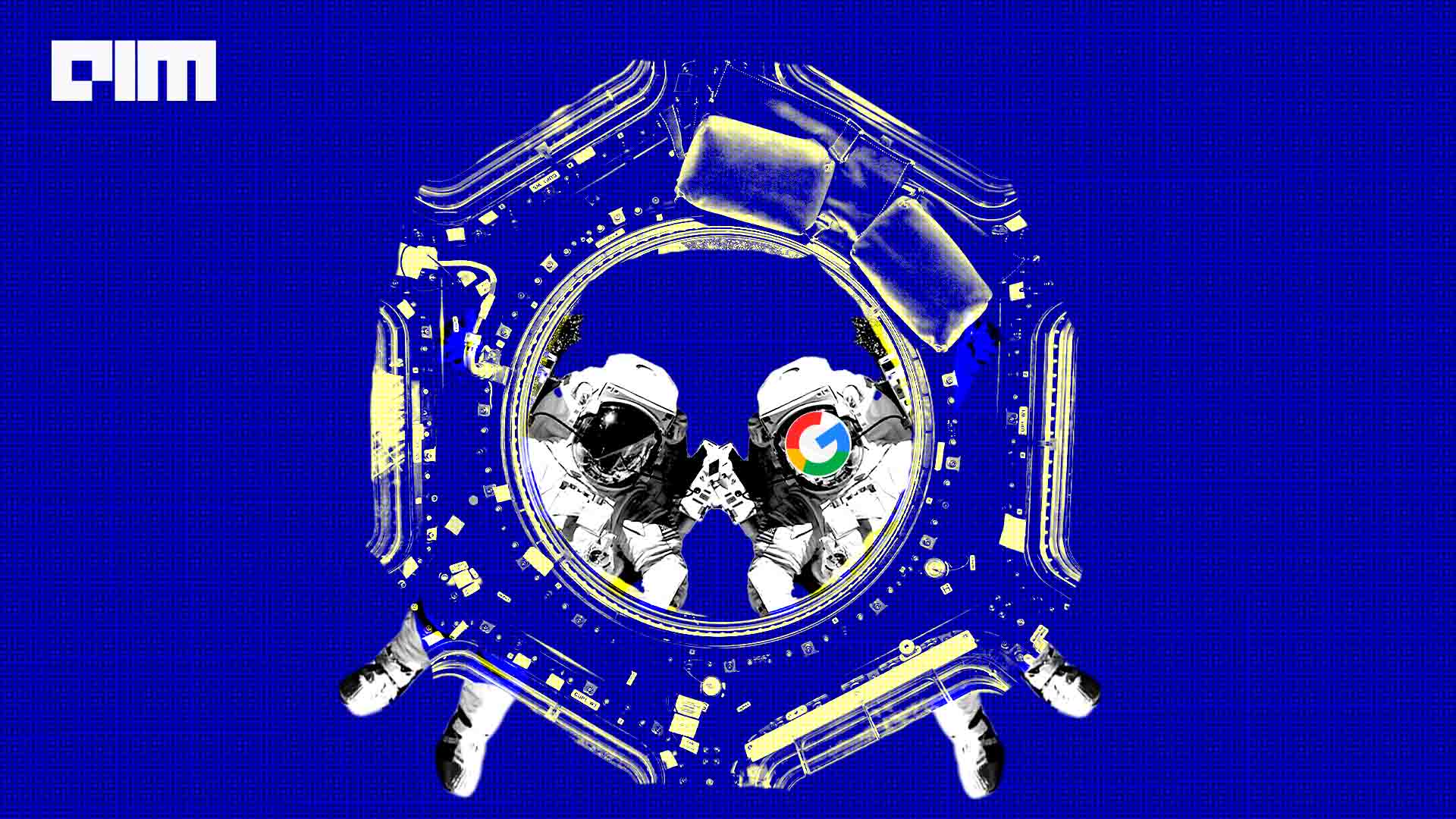|
Listen to this story
|
The space race is on, and the tech industry can get quite picky! For instance, Microsoft, Amazon, and IBM have been investing, quintessentially catering to the spacetech companies, both private and public. Google, on the other hand, is contributing, albeit sparsely. Meta and Apple, are barely sitting out on spacetech – mostly art and entertainment.
In 2017, SpaceX announced that it is partnering with Google to launch the biggest space project ever, which was later revealed in 2021 to be providing Starlink ground stations at Google’s data centres. So far, nothing big has been revealed yet. Besides Google Sky, a celestial map that shows objects like stars, constellations, galaxies, planets, or the Earth’s Moon, and Rubin Observatory that uses Google Cloud, the tech giant has not made major breakthroughs in the spacetech landscape.
On the other hand, Microsoft has been partnering with NASA for lots of projects since the beginning of space exploration. In 2020, Microsoft made a deal with SpaceX to connect their cloud computing network through Starlink satellite. Then came Google to make the deal with SpaceX for the same purposes. So far, nothing substantial has been announced.
Microsoft went on to launch Azure Space platform, providing infrastructure for space companies in the cloud. Recently, Microsoft announced that it is democratising the space development industry by offering infrastructure-as-a-service through Azure Orbital Space SDK for development, testing, and deploying space hardware.
IBM started partnering with NASA more than five decades ago for space missions. Since then, it has been developing technologies and providing infrastructure for space companies apart from NASA. In 2021, IBM collaborated with HPE Spaceborne Computer-2 and ISS National Lab to provide edge computing solutions in space. In 2022, IBM partnered with Sierra Space for building a space infrastructure for commercialisation of low-earth orbit (LEO), furthering cloud technology in space.
Recently, Amazon took huge steps and successfully tested/ ran a suite of AWS compute and machine learning (ML) software on a LEO, in a first-of-its-kind space experiment. Launched in 2020, the AWS in Space business segment, is aimed to further build and provide cloud services for spacetech innovations by connecting with the AWS Ground Station along with offering services for building satellites and conducting space and launch operations.
So far, (not) so good
NASA and ISRO have been the long standing giants of the space industry. But they have also partnered with IBM and Amazon for their data and infrastructure services since the beginning. After Elon Musk created SpaceX and paved the way for private companies to take part in the space race, companies like Microsoft, Google, along with other startups, started making breakthroughs.
In 2020, Google partnered with NASA’s Frontier Development Lab for upscaling low resolution images using AI. Google has also proposed another project to enable navigation on the moon’s surface without GPS. Looks like Google has been sitting ducks at an enterprise level and not focusing heavily on infrastructure for space missions. It mostly looks to support the mission once it has been successfully deployed – aka ‘post launch assistance’.
In November, during the launch of NASA’s Artemis, the videos of the take-off were simulcast in ultra-high-definition through Meta Horizon Worlds venues, which is a streaming product of Meta that supports 360-degree streaming throughout the world. Though Meta has been making the metaverse look more and more possible, getting into spacetech is still a long way to go as they still do not have their own cloud services.
Meanwhile, Apple had made no big bids in the space or even the cloud infrastructure industry until September, when it announced its investment plan of $450 million in satellite infrastructure to compete with Starlink. It also plans to invest $50 billion till 2026. Earlier, the Mac Observatory has been using the Apple Mac for astrophotography. Clearly, Google is ahead of Meta and Apple in the field, but they can do much better.
Need of the hour
Google, Apple, and Meta currently stand on top of innovations in the tech industry. By investing in IaaS (infrastructure as a service) for spacetech, they can contribute to the development of new space technologies. Many of them that are being developed for space exploration, including satellite-based internet and space-based cloud infrastructures, require advanced platforms and data centres to function, much like how SpaceX is doing with Starlink.
Meanwhile, in India
Globally, there are over 5,500 spacetech companies and 368 of them are in India. Moreover, there are an increasing number of data centres in India with Microsoft, IBM, AWS, and Adani Groups planning to build, facilitating them for space tech companies remains unaddressed. The Indian space-tech companies like Skyroot Aerospace, Bellatrix Aerospace, and Agnikul are proving to be successful in space missions and having infrastructures within the country can make India ahead in the space race.
[Updated] December 19, 2022, 11:00AM | The story has been updated to reflect Amazon’s latest developments in spacetech

‘The space industry is capital intensive and requires operators to make large up-front investments with long times to break even. Only large – typically government-funded – organisations could build, launch, and operate space infrastructure. IaaS solutions fill a critical gap between the satellite operators and downstream service providers and enable access with much lower up-front investments. While the ecosystem of service providers is bound to grow, operators will also see a faster ROI enabling smaller organisations to also step into the business. With the availability of robust state-of-the-art software tools that help reduce design time, the availability of more cost-effective launch vehicles, and the available talent-pool in India available from a successful multi-decade space program, we should see a strong ecosystem of operators and service providers develop and pave the way for many new applications and products.’



















































































